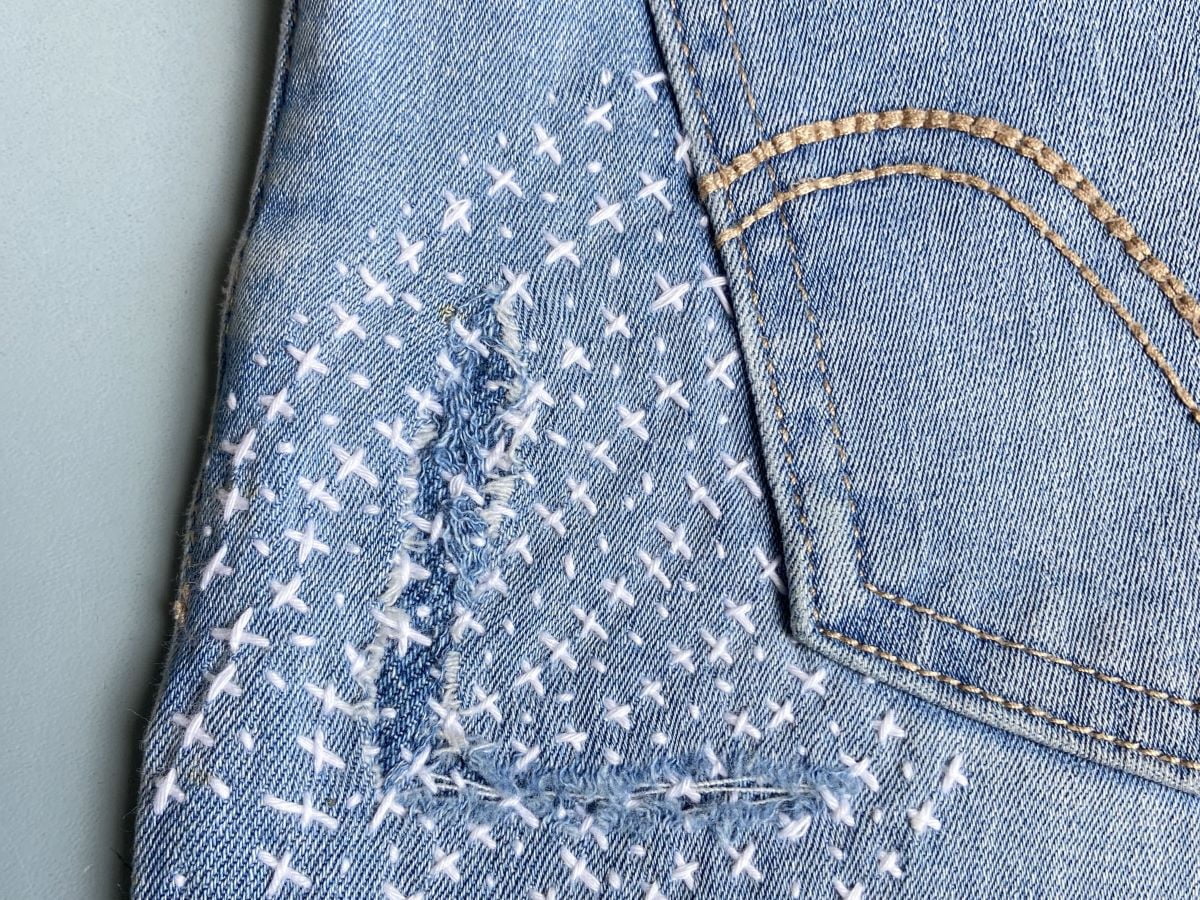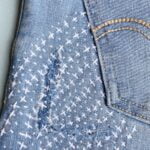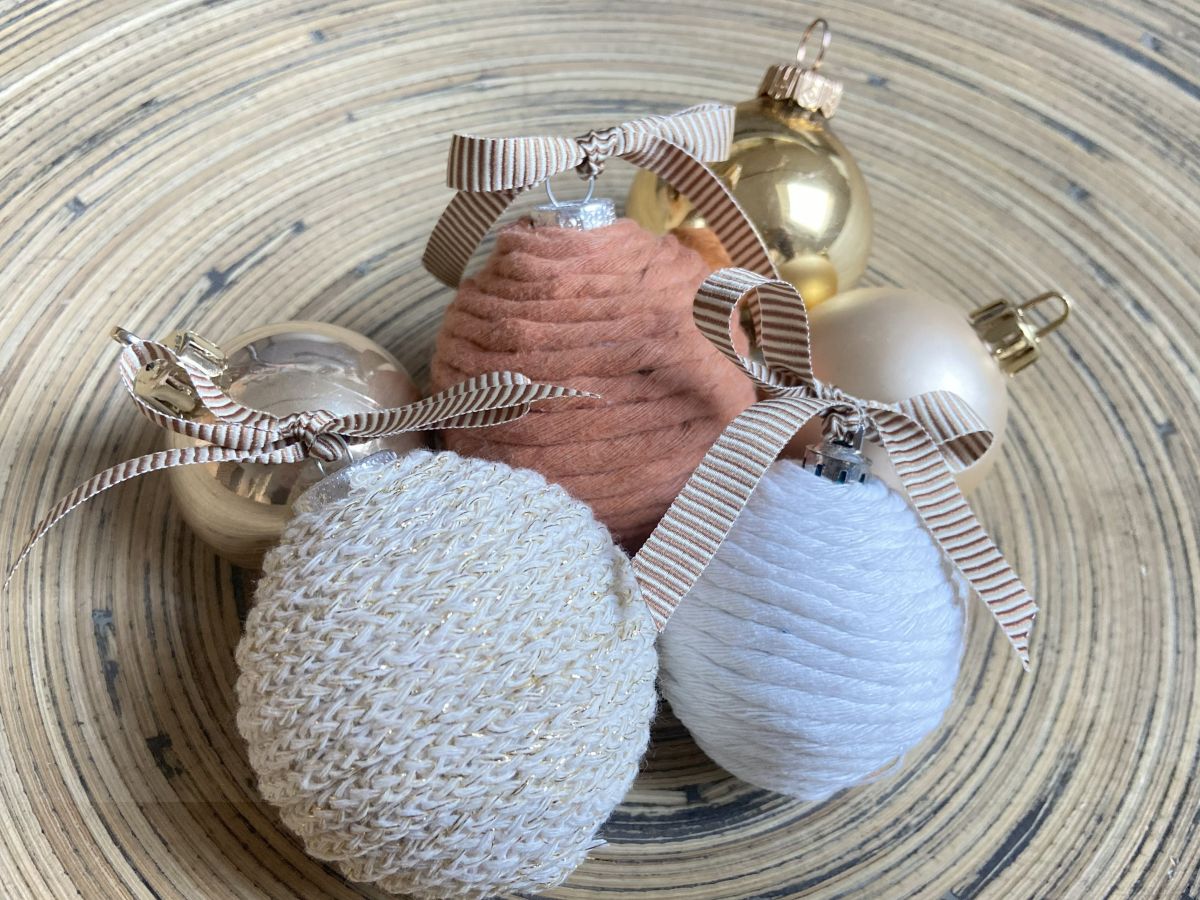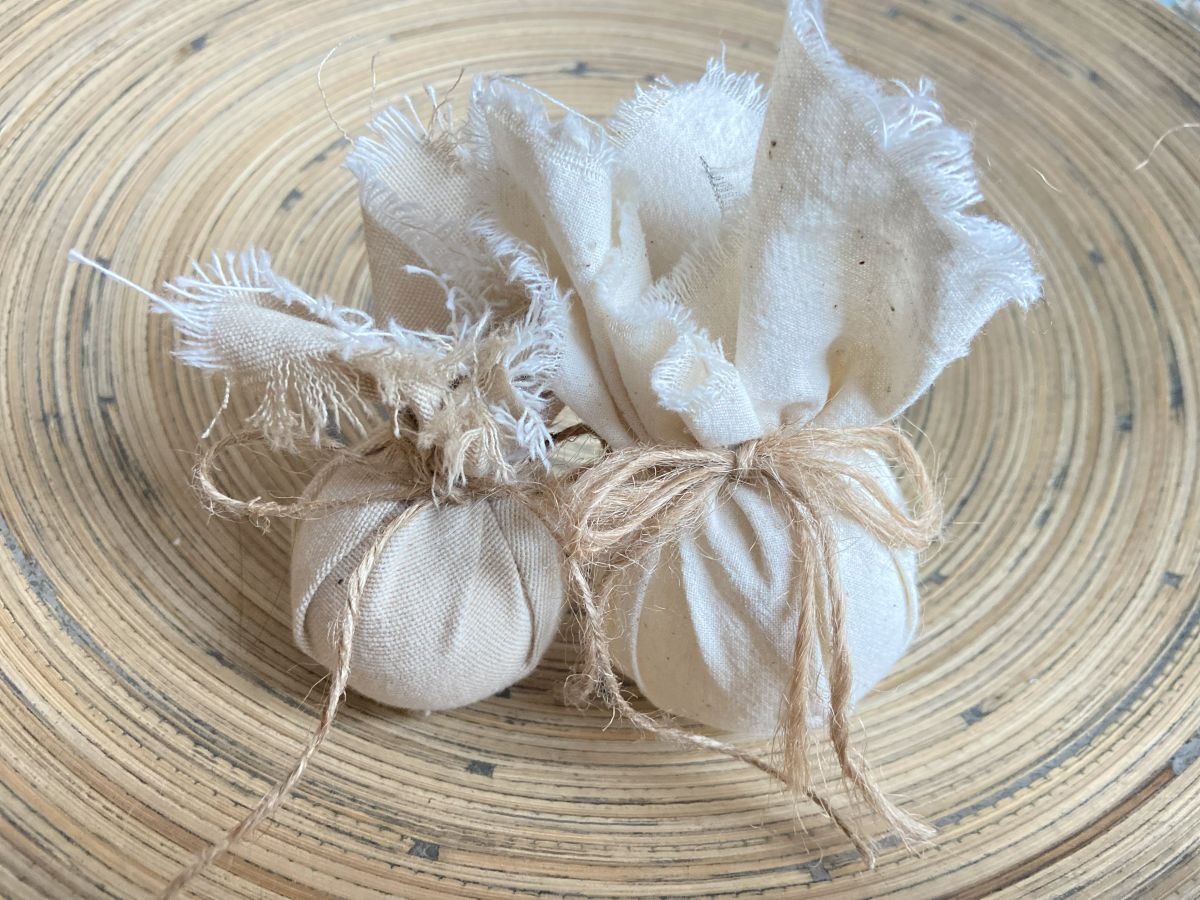A big hole or an ugly tear often does mean the end of a garment. A repair usually doesn't turn out very nice. Unless... Unless you turn the repair work into a work of art in itself. Our do-it-yourself expert Melanie shares how to do the most common minor clothing repairs yourself from now on. This time, she gets to work for us on repairing a large hole or tear in a garment. For this, she chooses the Japanese repair technique Sashiko mending (pronounced sashiko-ko).
Minor clothing repairs
Repairing your own clothes is not only better for the planet, it also makes you a richer person yourself. You save a beloved item of clothing - because why did it break? It must have come óbecause you loved wearing it so much and you literally save yourself money, because that trip to the shop or tailor is no longer necessary. You fix it yourself for another round of wearing pleasure. So put on a nice podcast or playlist (tips for this we also have) and get to work on small repair jobs. This time we will work on a little art project: sashiko mending. Really, anyone can learn this!
Sashiko Mending?
Sashiko mending is a traditional Japanese sewing technique that elevates the art of mending to a visual and functional height. Simple but effective stitches are used to breathe new life into worn-out garments. The signature white thread forms striking patterns on dark fabrics - therefore works beautifully with denim - creating a unique aesthetic that is both decorative and functional. But Sashiko goes beyond just being pretty; it enhances the fabric in a sustainable way, extending the life of your favourite garments. Each stitch not only repairs a hole, but also tells a story, giving each garment a unique character.
Sin! Far too many broken clothes in the wardrobe
A survey by UK textile organisation WRAP has found that 30% of people have garments hanging in their wardrobes that they no longer wear, simply because they need repair. Bummer! In France, the government is going to help people. Here, you get (up to) 25 euros discount on repairs (and pay an extra tax for a fast fashion purchase) in the hope that it will encourage people to repair clothes more often. In the Netherlands, we have to make do with initiatives such as United Repair Center, mended.eu (send in your repairs and get it returned fixed) or the local tailor - which we absolutely welcome, but more is always better.
Source: wrap.org.uk & change.inc & volkskrant.nl



With Sashiko mending, you not only repair the garment but also make it stronger.
Sashiko mending: a Japanese clothing repair technique
Tools
- needle
- sewing thread
- embroidery thread
- scissors
- ruler
- pencil or erasable pen
Instructions
- Place a piece of fabric behind the tear or behind the hole. Make sure your piece of fabric is bigger than the hole. Secure the piece of fabric by using your sewing thread with basting stitches. You can do this with any colour, as you remove this thread at the end. It is only meant to secure the piece of fabric for a while. You can also use a little fabric glue, but not too thick or you won't be able to get through it with your needle and thread.
- On the front, draw a checkerboard pattern with an erasable pen (which disappears with heat) or a pencil (for dark fabrics, use a white or yellow pencil).
- Now make running stitches with embroidery thread over the lines you have drawn. First horizontally, when you go vertical, create small crosses. You can choose to choose a thread in the colour of the fabric or just a contrasting colour.
- Baste off on the inside and remove the threads. You can make the erasable pen disappear by briefly holding the iron against it.
- This is the simplest pattern. If you have a taste for it, do an internet search for ‘sashiko mending’ and you will come across the most beautiful patterns you can create.
- You can also try visible Sashiko mending. This is similar to the previous solution, only now you don't put your piece of fabric behind your hole, but rather over the hole. Otherwise, the procedure is exactly the same. This is also a good way to hide a stain.
A handy instructional video to watch this technique:


Left: the piece of fabric is at the front, or visible Sashiko mending. Right: the piece of fabric is at the back, or Sashiko mending.
Alternatives to Sashiko mending
For a tear, you can also try the ladder stitch. Check out this instruction here!
Got a big tear or hole? Then use a cheery piece of cloth. You can glue this on with fabric glue or sew around the edge.
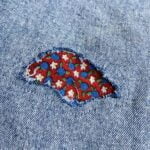
Get started with a no buy clothing style
Repairing clothes is great, but what do we do with all those other garments lying unused in the back of the closet? We get you started with the No Buy Fashion Guide. Over a hundred pages of cool ideas on how to look nice without even buying anything. Nothing. Nope. Nada. Not even second-hand! For 9.50 euros you will have it delivered straight to your inbox and thus on your tablet or mobile phone!
Will you also join this fun community? Read this guide too and discover lots of original ideas. Because so many cool clothes are already out there! Order the No Buy Fashion Guide from our webshop!

More sustainable tips from thegreenlist.nl
- Here we show another way How to quickly repair a shop hook.
- Help, your knot is off! Read how to sew these back on here.
- Stains in your clothes? This will get almost all the stains out.
- Looking for cheap second-hand clothes? This is how to find the most beautiful outfits at the thrift shop.
Photo credits: Melanie de Oliveira.

